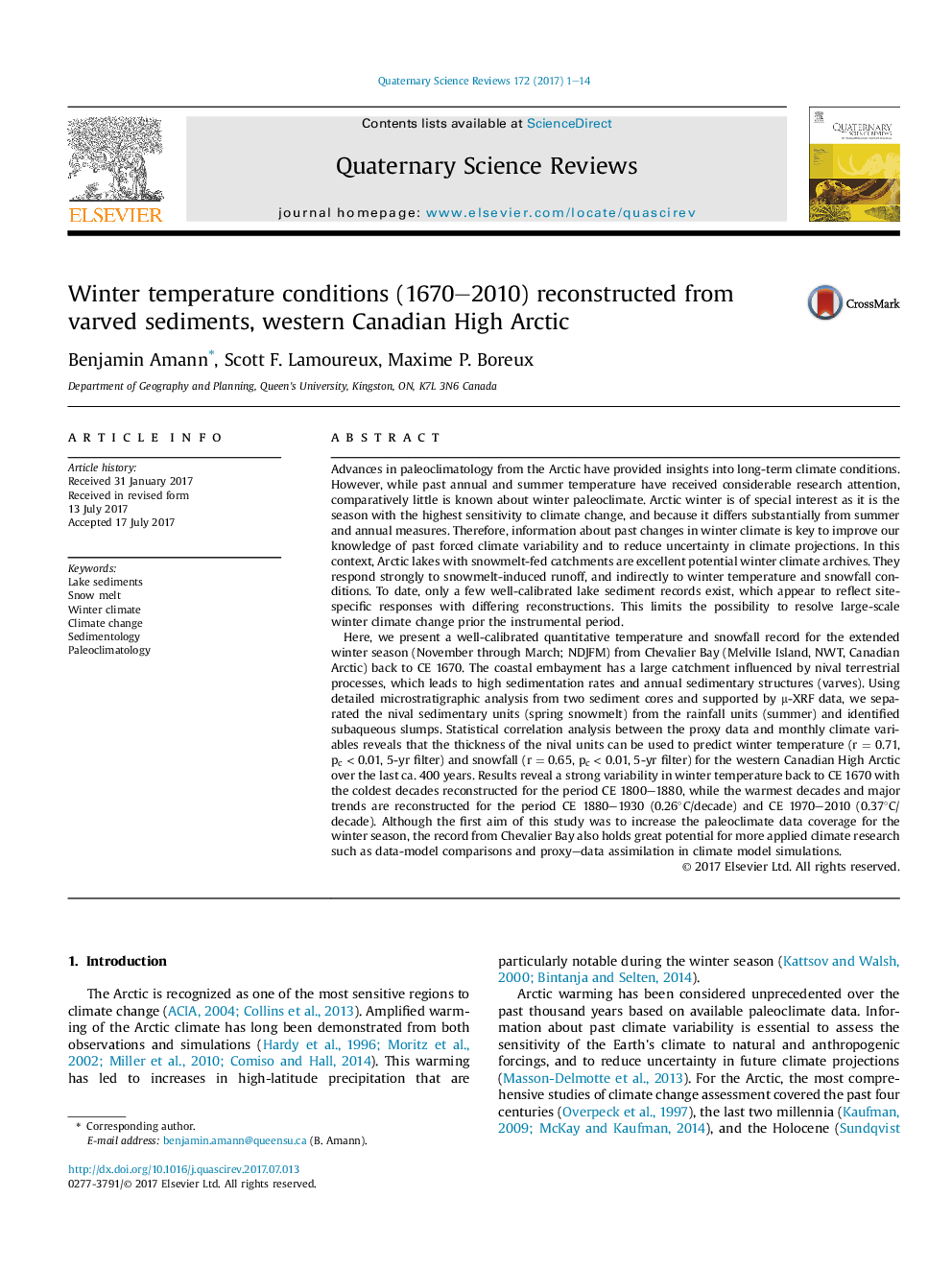| Article ID | Journal | Published Year | Pages | File Type |
|---|---|---|---|---|
| 5786546 | Quaternary Science Reviews | 2017 | 14 Pages |
Abstract
Here, we present a well-calibrated quantitative temperature and snowfall record for the extended winter season (November through March; NDJFM) from Chevalier Bay (Melville Island, NWT, Canadian Arctic) back to CE 1670. The coastal embayment has a large catchment influenced by nival terrestrial processes, which leads to high sedimentation rates and annual sedimentary structures (varves). Using detailed microstratigraphic analysis from two sediment cores and supported by μ-XRF data, we separated the nival sedimentary units (spring snowmelt) from the rainfall units (summer) and identified subaqueous slumps. Statistical correlation analysis between the proxy data and monthly climate variables reveals that the thickness of the nival units can be used to predict winter temperature (r = 0.71, pc < 0.01, 5-yr filter) and snowfall (r = 0.65, pc < 0.01, 5-yr filter) for the western Canadian High Arctic over the last ca. 400 years. Results reveal a strong variability in winter temperature back to CE 1670 with the coldest decades reconstructed for the period CE 1800-1880, while the warmest decades and major trends are reconstructed for the period CE 1880-1930 (0.26°C/decade) and CE 1970-2010 (0.37°C/decade). Although the first aim of this study was to increase the paleoclimate data coverage for the winter season, the record from Chevalier Bay also holds great potential for more applied climate research such as data-model comparisons and proxy-data assimilation in climate model simulations.
Related Topics
Physical Sciences and Engineering
Earth and Planetary Sciences
Geology
Authors
Benjamin Amann, Scott F. Lamoureux, Maxime P. Boreux,
